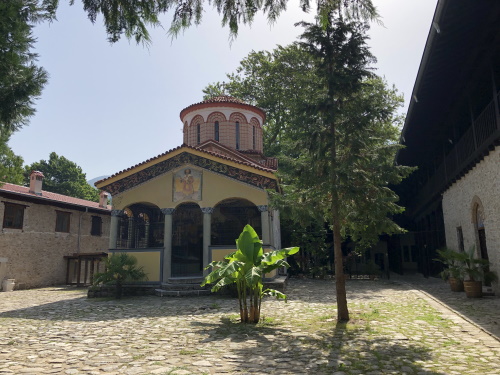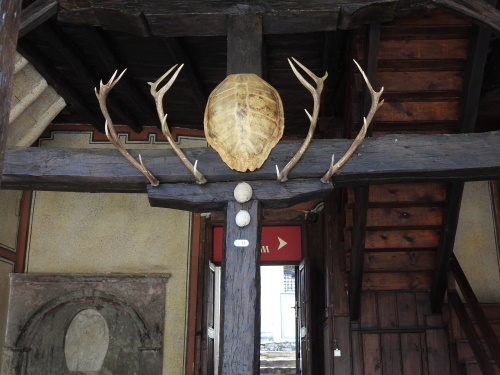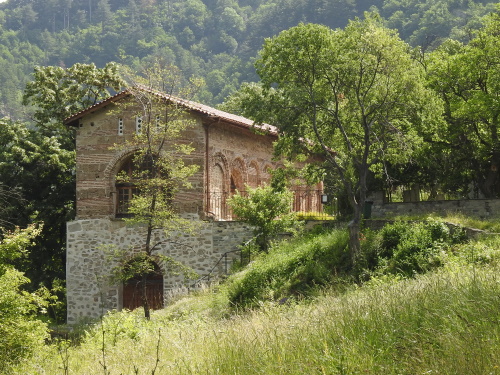Blog TWHS Visits
Bachkovo Monastery
At an about 45-minute drive south of Plovdiv, in the pretty Rhodope Mountains, lies the Monastery of Bachkovo. With origins in the 11th century, it is one of the oldest still active monasteries of the Balkan. It is a popular one as well: the site is already well signposted from the main road and there is a large paid car park. The last part of the road to the monastery, which lies - as it should be – on a hill, is flanked on either side by rows of souvenir and food stalls.
The monastery comprises a large complex, most of the places of interest lie within a walled compound. It is best known for its murals. The entrance is free, but I did buy an audio guide in English for 6 Lev (3 EUR) to learn more about its history and features. You can play the guide from your own phone. I had to do some mime to depict “audioguide” to the Bulgarian-only ladies in the monastery shop, who were much more confident in selling candles and postcards.
I started my sightseeing at the cathedral in the center of the main courtyard. Its walls are almost completely covered with paintings from the 17th to 19th century. There is also an impressive iconostasis. The monastery was of Byzantine and Georgian origin, and is now part of the Bulgarian Orthodox Church. The Georgians lost control of it in the 13th century, but still a jujube tree brought from Georgia can be seen as well as a cross rising from the dome bearing the inscription "Always win!" in Georgian.
The central courtyard is surrounded by buildings used and inhabited by the monks. It is still an active monastery. However, the complex is much larger: via a gate and a staircase you gain access to a second courtyard. Here the monks keep chickens! And there is a cute little church. Its porch is also covered with murals.
What I learned from the audio guide is that the monastery has been an important place of pilgrimage for centuries. That probably also explains the striking details, aimed at delivering a message to a wide audience. For example, the outer wall of the refectory is covered with a painting depicting the history of the monastery. And an ensemble of a turtle shell with four antlers hangs in a prominent place above the gate between the two courtyards. These exotica reflected the power of the Creator.
The oldest surviving part of the monastery complex lies outside the walls: the 12th century ossuary. It has recently been fully restored. You get there by walking about 500 meters on the path into the nature reserve, which starts opposite the exit from the main monastery compound. None of the other visitors followed me there. But maybe they knew more than I did: the ossuary was unfortunately closed. It is a unique two storey building that mixes Georgian and Byzantine building traditions. The interior also is said to be covered by beautiful murals.
Els - 18 July 2021


